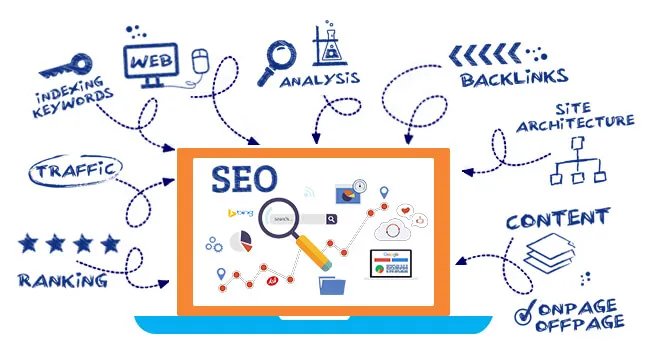Cloud-Native Product Development: Key Benefits for Modern Enterprises

Enterprises are rapidly shifting from monolithic, legacy architectures to cloud-native models to meet the demands of speed, scalability, and innovation. Cloud-native product development enables businesses to build and run scalable applications in dynamic environments such as public, private, and hybrid clouds. This approach aligns perfectly with modern product engineering services, which focus on delivering agility, resilience, and rapid iteration.
By adopting cloud-native practices, organizations can optimize their infrastructure, leverage microservices, and implement continuous delivery pipelines. Software product engineering services are now tightly integrated with platforms like AWS, Microsoft Azure, and Google Cloud Platform (GCP), making them central to digital transformation efforts.
What Does Cloud-Native Really Mean?
Cloud-native is more than just hosting applications on the cloud. It refers to an architecture and approach that leverages the full benefits of cloud computing—such as on-demand provisioning, auto-scaling, and high availability through technologies like containers, microservices, serverless functions, and declarative APIs.
A cloud-native strategy empowers engineering teams to design applications that are inherently resilient, loosely coupled, and independently deployable. This contrasts with traditional applications that are tightly integrated and difficult to scale or update without downtime.
According to CNCF’s 2024 Annual Survey, 80% of organizations have adopted cloud-native technologies, with Kubernetes, microservices, and container orchestration leading the way. This widespread adoption highlights the strategic importance of cloud-native development in enterprise software engineering.
Scalability and Flexibility at Enterprise Scale
Scalability is one of the biggest advantages of cloud-native development. Enterprises no longer need to over-provision infrastructure to handle peak traffic loads. Instead, cloud-native applications can automatically scale up or down based on usage, optimizing both performance and cost.
Microservices architecture allows different components of an application to scale independently. For example, an e-commerce company can scale its payment module without affecting the rest of the platform. This flexibility is critical for enterprises with fluctuating workloads or global user bases.
Platforms like AWS provide autoscaling groups, Azure offers virtual machine scale sets, and GCP enables horizontal pod autoscaling for containerized workloads. When these features are properly configured by experienced teams delivering product engineering services, businesses gain not only technical efficiency but also financial predictability.
Speed of Development and Deployment
Cloud-native applications are built to move quickly from development to production. With automated CI/CD pipelines, engineering teams can push code changes, test updates, and release features in hours instead of weeks. This continuous delivery model supports real-time user feedback, rapid innovation, and faster time-to-market.
Software product engineering services play a vital role in designing these automation workflows using tools such as Jenkins, GitHub Actions, GitLab CI, and cloud-native offerings like AWS CodePipeline, Azure DevOps, and Google Cloud Build. These tools help streamline deployment cycles while maintaining code integrity and application performance.
A report by Accelerate (DORA 2023) shows that elite DevOps performers deploy code 973 times more frequently and recover from incidents 6,570 times faster than low performers. These performance benchmarks are only achievable when enterprises fully adopt cloud-native practices within their product engineering workflows.
Cost-Efficiency Through Optimization and Pay-As-You-Go Models
Cloud-native platforms eliminate the need for upfront infrastructure investments. Enterprises pay only for the resources they use, and cloud providers offer cost monitoring and budgeting tools to track usage patterns. This helps teams optimize workloads and avoid unnecessary expenses.
By leveraging serverless computing (like AWS Lambda, Azure Functions, and Google Cloud Functions), businesses can run code without provisioning servers at all ideal for event-driven tasks and sporadic workloads. These functions automatically scale and incur charges only when executed.
Enterprises also benefit from intelligent workload placement across availability zones and regions, which improves fault tolerance and performance while maintaining cost efficiency. Well-architected frameworks from AWS, Azure, and GCP guide teams in balancing cost and performance a key area where product engineering services add value through strategic planning and implementation.
Best Practices for AWS, Azure, and GCP Cloud-Native Development
AWS
Amazon Web Services is the most mature cloud platform, offering robust tools for building cloud-native applications. Best practices include:
- Using ECS or EKS for container orchestration
- Implementing AWS Lambda for micro-tasks
- Applying the AWS Well-Architected Framework for design, security, and cost optimization
Azure
Microsoft Azure provides seamless integration with enterprise IT ecosystems. Best practices include:
- Utilizing Azure Kubernetes Service (AKS) for scalable containerized apps
- Leveraging Azure DevOps for CI/CD
- Incorporating Azure Monitor and Application Insights for observability and performance tracking
GCP
Google Cloud excels in data and machine learning capabilities. Best practices include:
- Using Google Kubernetes Engine (GKE) for advanced container management
- Automating deployments with Cloud Build and Cloud Run
- Applying Google’s Site Reliability Engineering (SRE) principles for operational excellence
By combining these best practices with modern software product engineering services, enterprises can unlock the full potential of each cloud provider, avoiding vendor lock-in while optimizing for performance and cost.
Security and Resilience in Cloud-Native Environments
Security is a top concern in cloud-native product development, especially when applications are distributed across services and regions. Enterprises must implement end-to-end security strategies that include identity and access management, data encryption, vulnerability scanning, and policy enforcement.
Cloud providers offer built-in tools like AWS IAM, Azure Policy, and Google Cloud IAM—to enforce granular access controls. Containers should be scanned for vulnerabilities using tools like AWS Inspector or GCP’s Container Analysis. These security layers are crucial for regulated industries like healthcare and finance.
Resilience is equally important. Cloud-native architectures are designed for failure—meaning they assume components may fail but the application continues to function. Through practices like load balancing, automated failover, and self-healing mechanisms, enterprises can ensure continuous service availability.
Conclusion: Empowering the Enterprise Future with Cloud-Native Strategies
Cloud-native product development offers a powerful foundation for enterprises seeking agility, scale, and speed. With the right cloud strategy, development practices, and product engineering services, organizations can build applications that not only respond to market changes but also anticipate them.
By leveraging the strengths of AWS, Azure, and GCP, and aligning cloud-native capabilities with business goals, enterprises can lead with innovation while optimizing for performance and cost. The shift to cloud-native is not just a technical upgrade it’s a strategic transformation that enables enterprises to operate, compete, and thrive in a digital-first world.





